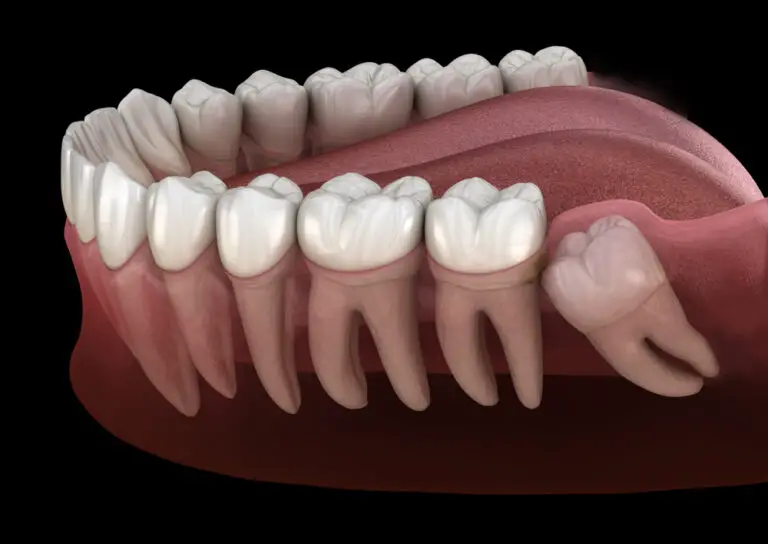Can I file my tooth with an emery board?
Filing your teeth with an emery board is not recommended. Emery boards are designed for filing and buffing fingernails, not dental work. Using an emery board on your teeth could damage tooth enamel and cause more harm than good. There are safer, more effective options for dealing with tooth issues like chips and roughness.
Why You Should Not Use an Emery Board on Your Teeth

There are several reasons why using an emery board to file your teeth is a bad idea:
- Enamel damage – Tooth enamel is the hard, protective outer layer of the tooth. It helps prevent cavities and protects the sensitive dentin underneath. Enamel is made up of hydroxyapatite crystals that provide strength and hardness to teeth. Filing with an emery board can scrape away and permanently damage enamel, leaving teeth more prone to decay.
- Can worsen problems – Attempting to file down tooth imperfections with an emery board is unlikely to make them better and can actually make problems like chips, cracks, and worn areas even worse. The abrasive papers on emery boards are more likely to catch on imperfections and worsen damage.
- Abrasion risk – Emery boards have papers and textures designed to abrasively file down and smooth fingernails. Using one on your teeth can lead to excessive abrasion damage as the grit scrapes away precious enamel.
- Infection risk – Emery boards are not sterile and contain bacteria. Using one on your teeth introduces more bacteria into your mouth and increases the risk of infection in any dentin you expose.
- Pain – Attempting to file teeth with a tool not designed for controlled, precise dental work is likely to be painful. Dentin and cementum underneath enamel are highly sensitive.
- Tooth sensitivity – Removing enamel exposes dentin tubules which leads to severe tooth sensitivity and pain from hot, cold, or sweet foods. This sensitivity can be permanent.
- Inability to reach problem areas – Safely filing down areas of concern often requires specialized angles and access that only a dentist has. Emery boards offer imprecise control.
Alternatives for Dealing with Tooth Problems
Instead of using an emery board, consider these safer, more effective ways to deal with tooth chips, cracks, roughness, stains, or other imperfections:
- See a dentist – A dentist can properly diagnose the issue after a thorough dental exam. They may use x-rays or magnification to detect underlying problems. The dentist can then determine the best treatment, which may involve dental filing, bonding, veneers, crowns, or other dental work.
- Use proper dental tools – If a dentist recommends filing down a rough edge or chip, they will use the proper sterile dental tools designed specifically for tooth reduction. Dental files are thin, shaped, and contain diamond abrasive particles for precision filing. Slow speed dental handpieces help control the process.
- Try teeth whitening – For issues like stains or superficial discoloration, teeth whitening treatments can help minimize the appearance of flaws. Whitening strips, gels, or trays with peroxide solutions can brighten teeth several shades with consistent use over time. Whitening works best for surface stains.
- Get dental bonding – For chips, gaps, uneven edges, and cracks with no pain involved, dental bonding often provides an easy fix. Bonding agents like composite resin applied by a dentist can repair chips and fill in cracks for a smooth, repaired appearance.
- Get veneers – For more significant cosmetic flaws, or widespread issues affecting multiple teeth, dental veneers are a great option. Veneers are thin porcelain or resin shells that adhere to the front of teeth to mask chips, gaps, stains, worn areas, and other significant imperfections.
- Use toothpastes for sensitivity – If enamel damage from chipping or cracking is causing temperature sensitivity, special toothpastes with ingredients like potassium nitrate can help relieve pain. This is only a temporary solution though.
Dangers of Filing Your Own Teeth

It’s understandable to want an easy at-home fix for tooth flaws. However, it’s crucial to understand the risks of using tools like emery boards or nail files that are not designed for precision dental work. Potential dangers include:
- Permanent loss of enamel and damage to tooth structure
- Increased sensitivity and throbbing nerve pain due to exposed dentin
- Loss of natural tooth contours
- Unnatural tooth shape or poorly contoured edges
- Exposed neck of the tooth and root surface
- Tooth discoloration from underlying yellow dentin
- Widened cracks, splits or fractures
- Bacterial infection in exposed dentinal tubules
- Risk of accidentally swallowing emery particles or tooth debris
- Gum irritation, lacerations, or recession
- Inability to adequately fix the underlying problem
- Eventual need for root canals, crowns, or dental implants
If you attempt to file your own teeth, even just to smooth a small chip, you risk permanent repercussions. It’s best to avoid DIY dental work and see a professional.
Professional Filing Procedures from Your Dentist
Your dentist has many years of specialized training, high-precision instruments, and advanced techniques to safely file teeth as needed. Here is an overview of professional dental filing:
- The tooth area to be filed will be numbed locally with an anesthetic like lidocaine. This prevents pain and discomfort during the process.
- Small specialized abrasive dental tools and handpieces will be used to gently contour and reshape the tooth structure. These include carbide or diamond dental burs, finishing strips, polishing points, and abrasive rubber tools.
- A smooth-edged tapered diamond file may be used for initial gross reduction. Other tools shape and refine the area.
- Water spray will be used throughout filing to continuously cool and lubricate the tooth surface being shaped.
- The dentist can manually access tight interproximal spaces between teeth.
- All instruments are sterile and disposable to prevent infection.
- Precision dental filing removes a minimal amount of enamel to conservatively recontour corners, edges, ridges, high spots, grooves, and points.
- Bonding agent can replace small amounts of lost tooth structure and rebuild natural contours as needed.
- Fluoride treatment after filing helps remineralize and strengthen remaining enamel.
- Additional visits may be scheduled to adjust or polish the filed area over time as needed.
Professional tooth filing by your dentist is controlled, precise, and protects surrounding tooth structures. It leads to natural looking and feeling results.
When Dental Filing May Be Necessary

There are certain situations where some minor tooth reshaping or dental filing may be appropriate or recommended by your dentist:
- Chipped or fractured teeth – Small chips and hairline cracks can often be effectively smoothed and rounded off through light filing.
- Worn teeth – Generalized erosion and enamel wear can be conservatively recontoured and evened out through filing.
- Overlapping teeth – Slightly reshaping overlapping teeth can improve fit, function, and appearance.
- Spacing issues – Filling in small gaps or tightening spaces between teeth can help prevent food impaction and address cosmetic concerns.
- Protruding teeth – Blunting or shortening excessively protruding teeth can improve fit and protect them from trauma.
- Tooth irregularities – Removing uneven ridges, bumps, ledges, or grooves through filing can prevent plaque buildup in hard to clean areas.
- Halitosis prevention – Reducing deep fissures and grooves on the tongue side of teeth can limit bacteria accumulation that causes bad breath.
- Cavity prevention – Sealing pits and smooth areas of demineralization helps prevent further decay.
- Improving appearance – Filing and contouring can minimize the look of minor stains, cracks, chips, gaps, and other imperfections.
More extensive filing that removes significant tooth structure is usually needed prior to major restorations like dental crowns, bridges, implants, or veneers.
How Much Tooth Can Safely be Filed Down?
There are limits to how much filing or reduction a tooth can withstand while remaining strong, healthy, and aesthetically pleasing:
- Conservative reshaping for minor imperfections only involves removing 0.3-0.5 mm of outer enamel.
- Slight contouring or reproportioning may reduce up to 0.8 mm of enamel thickness.
- Removing 1 mm or more from any area begins to significantly weaken overall tooth structure.
- Taking away more than 50% of the enamel layer risks pulp exposure and tooth fracture.
- Anterior teeth generally withstand more enamel removal than posterior teeth, due to forces exerted during chewing.
- People with bruxism (teeth grinding), joint disorders, or bite issues have less room for safe reduction.
- Multiple veneers or full coverage crowns allow for more aggressive underlying tooth preparation, since the restorations strengthen and protect teeth.
Ultimately, the dentist will determine safe enamel filing limits based on your unique clinical situation, tooth anatomy, existing defects, and overall health. Leaving some natural tooth structure intact is crucial for longevity.
Potential Complications from Excessive Tooth Filing
Removing excessive tooth structure through aggressive enamel reduction filing can lead to short and long-term problems. Potential risks include:
- Tooth sensitivity – Dentin exposure leads to severe hot/cold sensitivity that may require root canal treatment.
- Pulpal injury – Removing outer enamel layer can damage or inflame the tooth pulp tissue inside over time.
- Cracks or splits – Without sufficient enamel, teeth become weaker and prone to cracks spreading internally or fracturing.
- Aesthetic issues – Overly narrowed, shortened, or contoured teeth may not look natural.
- TMJ problems – Altering bite height too much can lead to jaw pain and dysfunction.
- Tooth mobility – Drastically thinned teeth become loose in their bony sockets.
- Risk of fracture – Teeth become weaker and at greater risk of breaking from chewing forces.
- Tooth death – Significant damage to pulp tissue can kill the tooth altogether.
- Infection – Deep filing may damage the root surface and cause tooth abscesses.
Safe and Effective At-Home Methods to Help With Tooth Appearance

If you have minor cosmetic tooth flaws like stains or superficial chips but want to avoid filing at home, consider these safer options:
Whitening toothpastes
- Gently polishes away surface stains from enamel.
- Contains mild abrasives like silica or baking soda.
- Typically also includes some level of hydrogen peroxide or similar whitening agent.
- Helps brighten teeth a couple of shades through regular daily use.
- Works gradually over time, not dramatic immediate results.
Over-the-counter whitening strips
- Flexible thin strips coated with peroxide whitening gel.
- Adhere directly to the teeth and conform to their shape.
- Worn for 30 min to 1 hour increments over 2-4 week period.
- Removes both deep and surface stains for maximum brightening.
- Can whiten teeth up to 7-10 shades but with potential for sensitivity.
DIY molded teeth whitening trays
- Custom fitted trays made at home from dental putty mold of teeth.
- Trays hold peroxide whitening gel against teeth during wear.
- Enables whitening product to thoroughly penetrate surface stains.
- Typically whitens 4-6 shades with steady 1-2 week use.
- More gentle on enamel than strips.
These methods are far safer and more conservative ways to gently improve tooth appearance from home. But take care not to overuse whitening treatments, as they can damage enamel over time.
Frequently Asked Questions About Filing Teeth with Emery Boards
Is it ever okay to use an emery board on my teeth?
No, emery boards are designed for fingernails, not dental work. They are too abrasive for enamel and provide imprecise, uncontrolled filing. Using them risks permanent tooth damage and is strongly discouraged. Always rely on proper dental tools designed specifically for teeth.
What kinds of problems can filing your teeth with an emery board cause?
Filing teeth with emery boards often leads to enamel scraping or loss, crack propagation, tooth fracture, uneven wear, ditching at the gumline, temperature sensitivity from exposed dentin, discoloration, poor aesthetics, and increased decay or infection risk. The abrasive grit can quickly do more harm than good.
Can I use a nail file instead?
No, nail files pose many of the same risks and are not made for use on teeth. Like emery boards, they are too abrasive and imprecise, making it easy to scrape off too much enamel or create uneven, unnatural shapes. Avoid using any nail care tools to try and fix dental flaws.
What if I just want to smooth a small chip or minor roughness?
Even attempting to file down a small imperfection on your tooth enamel puts you at risk of making the problem worse and causing additional issues. The proper long-term solution is to see a dentist, no matter how minor the chip or flaw may seem.
Is it okay if I’m very gentle and careful filing with an emery board?
Filing teeth demands expert precision and specialized tools. Being overly gentle with an emery board still poses risks, since they are not designed to carefully abrade enamel. Well-meaning but inexpert filing often makes problems worse. See your dentist for the safest approach.
Can’t I just use a nail file and then remineralize my enamel after?
Remineralization therapies like fluoride, calcium, or hydroxyapatite can help strengthen enamel but they cannot properly rebuild what’s been lost. It’s better to avoid improperly filing or abrading away enamel in the first place, since that damage is irreversible.
What home remedies can I use to fix a chipped tooth?
There are no effective home remedies for repairing a chipped tooth. The safest approach is to see a dentist, who can expertly smooth, bond, or restore the chip for a natural result. Using DIY fixes like emery boards or superglue risks further tooth damage. Manage pain or sensitivity until you can get professional help.
Why shouldn’t I just file down the sharp edges around a cracked tooth?
Filing a cracked tooth without addressing the deeper issue can actually propagate the crack further and cause more harm, including possible tooth loss. Even if a crack is superficial, only a dentist has the tools, training, and vision to safely file cracked teeth, protecting their structure.







